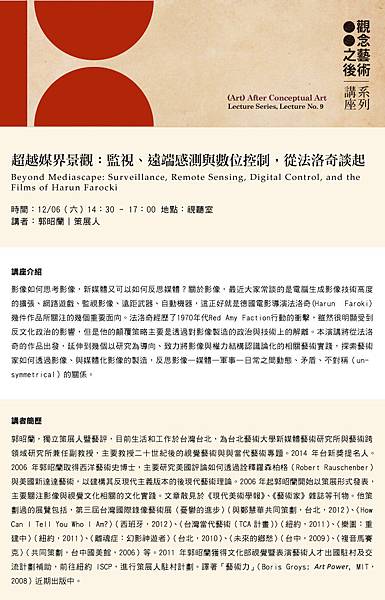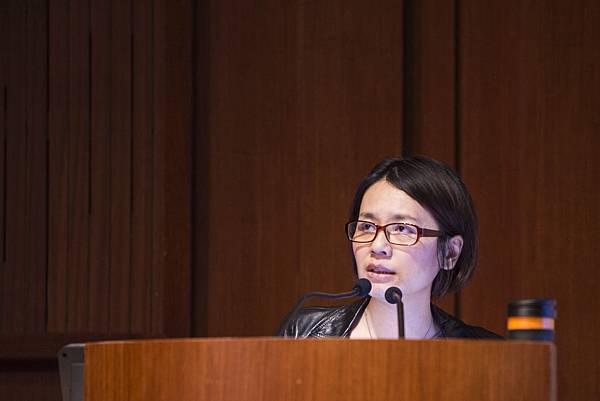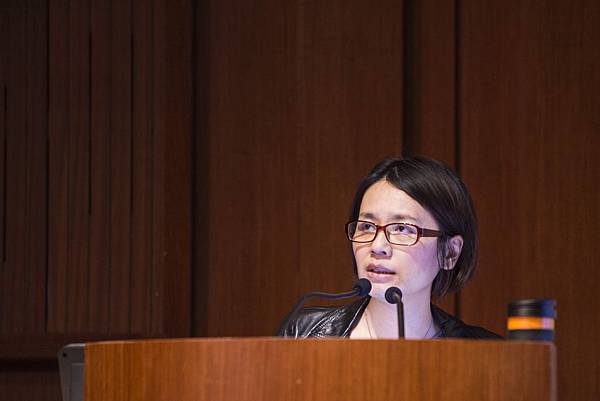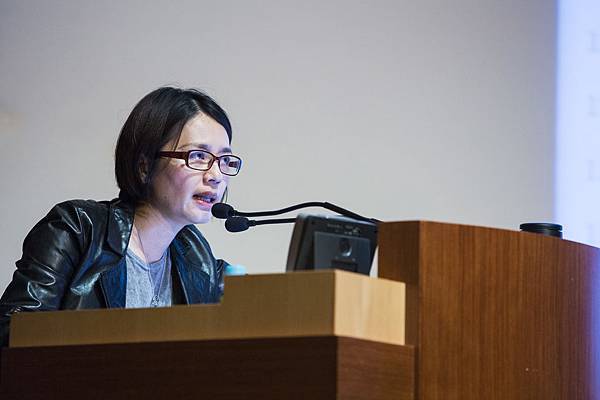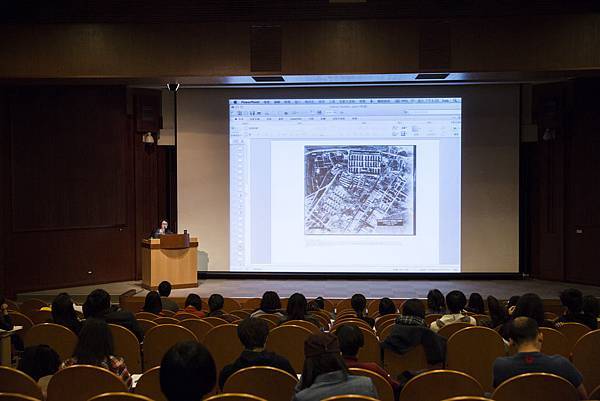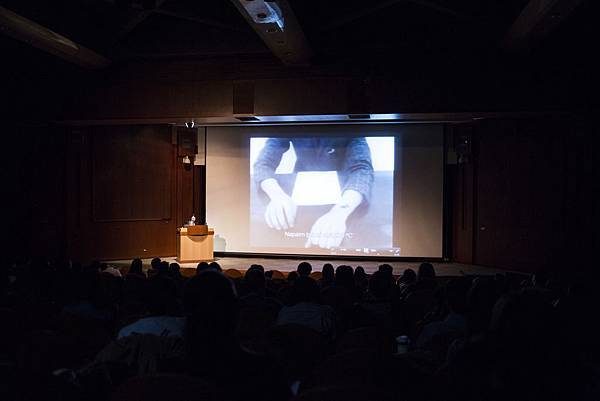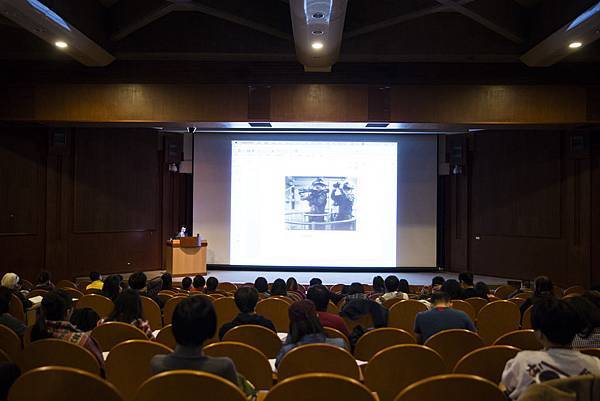Sjoerd van Tuinen : ”Introduction", Speculative Art Histories: Analysis at the Limits, Edinburgh University Press, 2017
(蘇維喧翻譯)
Introduction
Sjoerd van Tuinen
This book explores some of the implications of and opportunities within the speculative turn in continental philosophy from the perspective of art history. Speculation? Besides its only legitimate domain today, that of finance, is this not a thing of the past, when metaphysicians were used to making unverifiable claims about the nature of God, the World and the Self? From Kant to Wittgenstein, critical philosophy has taught us to remain silent on that of which we cannot speak.Likewise, art history has come a long way in establishing itself as a positive human science independent from its metaphysical beginnings. In both cases, enlightened, self-critical and self-reflective thought has worked hard on closing the door to ontology, on reducing the Ideas of reasons ideology and on limiting the domain of knowledge to phenomenal objects. Speculation, it seems, has not been en vogue for quite some time.
緒論
Sjoerd van Tuinen
這本書旨在由藝術史的角度,探索歐陸哲學的推測轉向(speculative turn)中所隱含的暗示及可能性。推測?今日它除了仍適用於金融領域*1之外,難道不已屬於過去—當形上學家仍習於對上帝、對世界以及對自我的本質做出無從證實的斷言?從康德(Immanuel Kant)到維根斯坦(Ludwig Wittgenstein),批判哲學已然教會我們對於不可言說的事物保持緘默。同樣地,藝術史長期以來也致力於脫離其形上學起源,將自身建立為一門實證人文學科。啟蒙的(enlightened)、具有自我批判及自反性的思維在上述兩例中都扮演要角,努力地關上本體論大門、將理性的理念(Ideas)化約為意識形態,並且將知識領域侷限在現象學對象上。由此看來,推測似乎早已過時好一陣子了。
Quentin Meillassoux has recently labelled the anti-speculative status quo as ‘correlationism’: the conviction that there can be no access to a Reality that is independent of human subjectivity and its mediations through the senses the unconscious, langue, technology or indeed art and aesthetics. If, by contrast, new speculative philosophies realign themselves with pre-critical philosophy, this is not necessarily because they cultivate a dogmatic belief in the powers of human reason, but because the inherent limitations of the critical (I.e. relativist) stance become more apparent by the day. We urgently need to get over ourselves. Just as the financial crisis teaches us that the future must be reclaimed from those speculative investments whose only aim is to cancel it out, the slow awareness that we are living in the Anthropocene forces the humanities to resituate themselves with a much less anthropocentric and much more inclusive perspective. As Peter Sloterdijk writes, the problem with the grand narratives of metaphysics was not that they were too big, but rather that they were not big enough[2]. The problem of philosophy is no longer the contradictions to which every attempt to find first principles necessarily falls victims, just as the problem of the humanities is no longer the losing out of facts to theoretical illusions. On the contrary, the facts themselves appear in a new light and with new depth, which involve the future of life and the cosmos. Is is time for a new, speculative realism, which treats human beings, science, and social relations as things having no more status than neutrinos or jelly fish.
甘丹.梅亞蘇(Quentin Meillassoux )最近把這種反思辨的現狀稱為「相關主義」*2(correalationism):堅信沒有任何認識實在的通道,可以獨立於人類主體及透過主體感知、無意識、語言、技術,以及當然了,藝術及美學而來的沉思[1]。相對地,如果說新的推測哲學體系投入了前批判哲學的陣營,那並不必然是因為他們建構了對人類理性力量的教條式信仰,而是因為批判哲學(也就是相對主義者)立場的先天限制在今日更加明顯。我們迫切地需要跨越自我的障礙。正如同金融危機教會我們,投機性投資(speculative investment)的唯一目標是把未來給抵消,而我們必須把未來從它手中給拿回來;人類對於自身正處於人類世的遲緩醒悟也逼迫著人們重新採取一個更非人類中心、更具包容性的視角。正如Peter Sloterdijk所寫的,形上學大敘事的問題不在於太過宏大,而在於不夠宏大。哲學的問題已不在於其矛盾使得所有建立首要原則的嘗試都深受其害,正如人類的問題也不再是事實輸給了理論的幻象。相反地,事實自身在牽涉著生命及宇宙的未來的嶄新光線與深度中顯現。這是屬於一個新的推測實在論(speculative realism)的時刻,對待人類、科學與社會關係,如同對待與微中子或是水母同等地位的事物。
It is time for a bio- or even a geo- art-history. Whereas art history is a fetishist, even the fetishist, historical discipline, Adi Efal in her contribution to this book develops the concept of habitude as a tool through which speculative art history can understand the work of art as produced thing, and therefore as inseparable from its mesh of conditions of production and duration. The same goes for art itself. Paraphrasing from the chapter by Elisabeth von Samsonow: if ours has been the age of’archiheresy’, a period characterised by the dissimulation of the ontological tie between architecture and the earth, architecture itself should learn to overcome the fetishisation of its objects and become a para-geology.
是時候迎接一個生物-,甚至是地理-藝術-史學了。儘管藝術史是個拜物教徒,甚至可以說歷史學科就是個拜物教徒,在這本書中Adi Efal把習慣(habitude)的概念發展為一個工具,藉此,推測藝術史可以把藝術作品理解為製造物,並且因此與作品的製造及存在條件網絡不可分割。藝術本身也是如此。略述Elisabeth von Samsonow在這本書的章節如下:如果說我們身處的時代可以被稱為「異教徒」(’archiheresy’)時代,特徵是掩蓋建築與土地之間的本體論連結;那麼建築自身應該要學會克服對於其對象的拜物傾向,進而成為一門準地質學(para-geology)。
Speculative philosophy seeks to recuperate a pre-critical sense of, and more direct access to, something Absolute, an Outside called Spirit, Life, Chance, Nihil or a Nethermost point of view, while also taking into account the undeniable progress that is due to the labour of critique. The nature of this Absolute and the principles according to which it can be thought form the bifurcation points between the various, often mutually excluding speculative trajectories. This book uses an extended concept of speculation, which covers not only the rationalistic nihilism of Ray Brassier, the accelerationism of Reza Negarestani, the object-oriented ontology of Graham Harman, the philosophy of nature of Iain Hamilton Grant, and so on, but also includes the transcendental empiricism of Gilles Deleuze, the speculative constructivism of Isabelle Stengers, the speculative pragmatism of Brian Massumi and the new materialism of Karen Barad. Perhaps what unites all these positions is a common enemy: if not Kant, then at least a shallow neo-Kantianism, or the reduction of critical thought to the legitimation of what already exists and the defence of human values. Even if few speculative philosophers would acknowledge it, and some would resolutely deny it, speculative philosophy is thus reminiscent of the romantic and vitalist reactions to the eighteenth-century Enlightenment. This reminiscence becomes all the more striking as it is particularly in circles of contemporary art and its institutions that its concepts have found resonance. Hence the question posed by this book: how could today’s materialist, realist, pragmatist, object-oriented, vitalist and/or rationalist speculations, as well as speculative art histories from the past, offer alternatives to the contemporary complementarity of the philosophy of art (including aesthetics) and art history, often based on mutual recognition and critical limitation rather than imaginative crossover?
推測哲學嘗試恢復通向某種絕對的,具有前批判意味的直接通道,同時把過程中不可否認的批判工作也考慮進去。所謂的絕對(Absolute)是一個外部,稱為精神、生命,或由虛無主義或底層(Nethermost)觀念而言,稱為機會。而複雜多樣且常常互相排除的不同推測路徑,其分岔點就在於這個絕對的本質以及它可以根據什麼原則被思考。這本書使用了廣義的推測概念,除了涵蓋布雷席耶(Ray Brassier)的理性虛無主義(rationalistic nihilism)、內加列斯坦尼(Reza Negarestani)的加速概念(accelerationism),哈曼(Graham Harman)的物導向本體論(object-oriented ontology),葛蘭特(Iain Hamilton Grant)的自然哲學(philosophy of nature)等等,還包括了德勒茲(Gilles Deleuze)的超越經驗主義(transcendental empiricism), 史坦熱(Isabelle Stengers)的推測建構主義(speculative constructivism),Brian Massumi的推測實用主義(speculative pragmatism)以及Karen Barad的新唯物主義(new materialism)。或許團結所有這些立場的是一個共同的敵人:就算不是康德,至少也是膚淺的新康德主義(neo-Kantianism) ,或是減少了的人文價值捍衛以及對於既存事物合理性的批判思考。也因此,就算只有少數的推測哲學家會承認,而某些人會堅決否認,推測哲學確實讓人想起浪漫主義和生機論者們對於十八世紀啟蒙運動的回應。而讓人震驚的是,這個連結特別可以在當代藝術圈以及其機制找到共鳴。因此,這本書所拋出的問題是:既然當代的藝術(包括美學)哲學的互補性與藝術史,常建立在相互認知以及侷限的批判性而非創新上,那麼今日的唯物主義、實在論、實用論、物導向、生機論以及/或是理性主義的推測哲學,還有過去的推測藝術史,能夠提供什麼樣的替代方案?
In order to see where the contemporary speculative turn differs from romanticism, it is instructive to have a look at Jean-Marie Schaeffer’s famous critique of the speculative idealist theory of art. In his Art of the Modern Age: Philosophy of Art from Kant to Heidegger (1992), Schaeffer famously locates the birth of the speculative theory of Art in the shift from Kantian aesthetics to romantic aesthetics.3 Since it was rooted in an experience of disorientation and nostalgia, he argues, romanticism must be seen as the restorative reaction to the Enlightenment as embodied by Kant. It compensates for the crisis in the religious foundations of humanity and for the crisis in the transcendental foundations of philosophy with the mirage of Art as the privileged medium for the harmonious and organic reintegration of everything that seemed discordant, alienated and dispersed. From Novalis, Hölderlin and the Schlegel brothers to Schelling, Schopenhauer and Nietzsche and even to Heidegger, romantic speculation would thus consider art to be a more adequate expression of the Idea than philosophical discourse, and attributes to it the power of access to something absolute where philosophical discourse fails. In this way, romanticism performs a 'sacralization of art',4 even if it is still up to philosophical discourse to provide its legitimation. For precisely by seeking the essence of art in a cognitive and ontological status that would be peculiar to it, philosophy simultaneously makes this essence into art's dogmatic foundation.
瀏覽薛佛(Jean-Marie Schaeffer)對藝術的推測唯心理論的著名批評,對於看清當代的推測轉向與浪漫主義有何不同深具啟發性。在他的著作《中世紀藝術:由康德到海德格的藝術哲學》(1992)中,薛佛把藝術的推測理論的誕生定位於由康德式美學到浪漫主義美學的過渡。他認為,既然浪漫主義是根植於迷失和懷舊的經驗,那麼就必須將其視為對應於康德所體現的啟蒙運動的修補。浪漫主義伴隨著大寫藝術(Art)的幻景,所有一切失調的、疏離的、分散的事物都可以藉由大寫藝術這個具有特權的媒介,重新獲得和諧而有機的整合。浪漫主義從而彌補了人類信仰根基的危機,也彌補了哲學的經驗根基的危機。從諾瓦利斯(Novalis)、荷爾德林(Hölderlin)和施萊格爾兄弟(the Schlegel brothers)到謝林(Schelling)、叔本華(Schopenhauer)和尼采(Nietzsche)甚至到海德格(Heidegger),浪漫主義認為藝術比哲學論述更能適切表達理念(Idea),並且有能力通往「絕對」這個哲學論述敗北之處。如此一來,浪漫主義進行了一場「藝術的神聖化」,即便藝術仍然需要哲學論述提供合法性。精確地來說,正因為哲學在藝術獨有的認知與本體論情境中尋找藝術的本質,這個本質同時成為了藝術的教條根柢。
According to Schaeffer, the idea of art as ontological revelation has been the doxa of
reflection on art and its discourse of legitimation from romanticism to modernism. For almost 200 years, art has been the Other of philosophy, the place where the latter would reflect itself, all the while compromising our actual relation to the arts in their historical plurality and variability. By contrast, Schaeffer seeks to return to a strict distinction between art and speculative thought and regain a view on 'the multiple and changing reality of the arts and art works'.5 Neither art theory nor art practice, he argues, has ever needed philosophy to exist. Art is not even an object endowed with an internal essence but 'only is (becomes) what people make of it'.6 Philosophically, this positivist self-limitation of philosophy to an empirical point of view coincides with a 'come-back to Kant', that is not Kant's theory of art (which does not exist7), but Kantian aesthetics as a critique of the discourse on art: 'a declaration of the cognitive nullity of any philosophical doctrine founded on a definition of the essence of art, and a limitation of aesthetic discourse to the critical evaluation of art works and (I would add) to the study of their phenomenal judgment.'8 In other words, the Kantian correlationism between the thing in itself (the object) and its enjoyment by us (the subject) is re-established, as is the wrenching duality of aesthetic reception and artistic production, or the duality of aesthetics as a theory of natural beauty and a theory of artificial beauty. Philosophy is good only for meta-aesthetic contemplation: an anthropology of aesthetic experience and an inquiry into the status and legitimacy of judgements of taste .
依據薛佛的說法,自浪漫主義到現代主義以降,藝術作為本體論揭示的觀念一直都是反思藝術以及其論述合法性的信條。近兩百年來,藝術始終是哲學的他者,一個哲學自反之處;與此同時,在藝術之中,我們放棄了和藝術的歷史多元性以多樣性之間的真實關係。因此相反地,薛佛試著重新嚴格區辨藝術與推測思維,並且重新觀看「藝術及藝術作品多樣且不斷變化的實在」。5他辯駁道,不管是藝術理論或是藝術實踐,都從未需要哲學才能存在。藝術甚至也不是一個具備了內在本質的客體,而「只是(成為)人們對它的理解」6 。哲學上來說,這樣把哲學自我設限於經驗論的觀點與「返回康德」不謀而合。這並不是康德的藝術理論(這並不存在7),而是康德美學作為一種對藝術論述的批判:「聲明任何建立在藝術本質定義之上的哲學學說其認知都是無效的,並且把美學論述限於對藝術作品的批判性評價以及(我會再加上)作品的現象學判斷的研究上。」8換句話說,這重建了從事物自身(客體)到我們(主體)從中得到的樂趣兩者之間的康德相關主義,也重建了美學接受與藝術生產兩者掙扎的二元性、或是美學作為自然美的理論以及人造美的理論的二元性。哲學只對於後設美學的沉思有益:一門美感經驗的人類學,同時也探查品味判斷的地位及合法性。
Schaeffer's critical or anti-speculative return to Kant mirrors the development of art
history in the past century. Initially, the speculative theory of Art marked the rise of historicism, which turned works of art into empirical manifestations of transcendental determination (this involved evolutionism as much as objective idealism). It is from historicism, especially Hegel's compelling account of the relation between art's history and the emergence of art as historical object,9 that art history was born. For reasons of brevity, we mention here only the vehement interpretative gestures of the Vienna School, from Alois Riegl's Kunstwollen to Hans Sedlmayr's Strukturanalyse.10 Much more than Panofsky or Gombrich, who would later deal with the instability they found in works of the past by injecting them with redeeming universal or humanist content, the authors from the Vienna School liberated themselves from any empiricist superintendence. By draining individual works of art of mimetic reference and symbolic content, as Vlad Ionescu shows in his contribution to this book, they made them look all the more inhuman and prodigal, dissipating human subjectivity in anonymous landscapes through the concept of mood. Their method of extracting the transcendental schema from the work of art would be taken up by authors writing on the interface of philosophy and art history such as Georg Lukács, Walter Benjamin, Mikhail Bakhtin, Viktor Shklovsky, Aby Warburg, Theodor Adorno and Henri Focillon. Regardless of the differences in the traditions these figures come from, each of them defies the empiricist complacency and the overwhelming bias within the humanistic disciplines towards classicism. Whether it is through eidetic apprehension, montage, intuition or Gestalt psychology, their aim is always to produce historical intelligibility by discovering the virtual presence of the world at large (e.g. the anonymous history of 'style', the cyclical 'life of forms', symbolic structure, the state of development of the means of production, and so on) inside the concrete work of art.
薛佛對於康德的批判或反推測回返,反映了過去一世紀以來的藝術史發展。一開始,大寫藝術的推測理論標識了歷史主義的崛起,也就是將藝術作品變成先驗決定論的經驗顯現(這也牽涉到進化論以及客觀唯心論)。藝術史於是誕生自歷史主義,尤其是來自黑格爾對於藝術的歷史以及藝術顯現為歷史對象之間的關聯十分具有說服力的論述。9 我們在這裡只簡要提及維也納學派(Vienna School)的有力詮釋態度,包括里格爾(Alois Riegl)的藝術意志(Kunstwollen)到澤德邁爾(Hans Sedlmayr)的結構分析(Strukturanalyse)。10不同於潘諾夫斯基(Panofsky)和貢布里希(Gombrich)後來處理過往藝術作品中的不確定性的方法是為其注入彌補性的普世或人文內涵,維也納學派的作者們將自己從經驗論的監控中給解放出來。Vlad Ionescu在本書告訴我們,維也納學派的學者們排除了個別藝術作品中的模仿引涉和象徵內涵,使得作品看來更加非人且開放,並且通過精神狀態的概念,使人類主體逸散到不知名的風景中。在哲學及藝術史的接界上書寫的作者們,如盧卡奇(Georg Lukács)、班雅明 (Walter Benjamin)、巴赫金(Mikhail Bakhtin)、史克洛夫斯基(Viktor Shklovsky)、華堡(Aby Warburg) 、阿多諾(Theodor Adorno)和福西永(Henri Focillon),他們採用了維也納學派由藝術作品提取先驗圖示的方法。儘管這些人由各自領域的不同傳統出發,但都意在對抗經驗論者的自滿以及人文學科中強烈的古典主義傾向。不管是取徑本質理解(eidic apprehension)、蒙太奇、直覺或是完形心理學,他們的目標一直都是藉由發現世界全體的虛擬在場(例如「風格」的無名史、循環的「造型的生命」、象徵結構、生產方式的發展狀態,等等),在具體的藝術作品中生產歷史的可理解性。
But if speculative intuition lay at the origin of art history, albeit hidden behind the mask of scholarly conventions, the young discipline was quick to exhaust its speculative potential. As Georges Didi-Huberman points out in his influential, even if somewhat partial discussion of Panofsky, the latter's re-edition of Idea features a preliminary warning (CAUTIUS!) that should protect his discipline from immoderations in the cognitive exercise of reason. It is this fear that led art history to the anti-speculative stance that it has consolidated until today: 'Panofsky's CAUTIUS is not only a call for prudence; it is the cry of someone who went too far into the shifting sands of philosophical idealism, and who found only the worst branch - that of positivism, of iconography in a shrunken sense - to prevent his sinking'.11 Even the recent calls for more interdisciplinarity, heard in art history and art theory no less than in academic circles, tend to consolidate this call for prudence more than they overcome it, as the modern gap between philosophy and art history, and the postmodern call for more interdisciplinarity are both equally inspired by a consensual abhorrence of more speculative approaches to art. Thus while it is easy to see how, in the course of the twentieth century, art history and the philosophy of art have followed diverging trajectories, it is also important to point out that they converge in at least one respect. Just as art history, in order to establish itself as a scientific discipline, has inclined towards a positivist and objectivist 'analysis' of art (iconology and semiotics), the professionalised philosophy of art has tended towards the facticity and subjectivism of strong correlationism (hermeneutics and phenomenology). Both have come either to focus on themes and meanings, general tendencies of the psychology of perception, cultural symptoms and other kinds of humanist knowledge, or to suspend their intrinsic sense of problematising in their admiration of science, media and technology. For this reason, it was common to speak equally of the 'end of Art', the 'end of history' and the 'end of metaphysics' not so long ago. It is against this defeatism in art history and philosophy alike that this book takes a stance.
不過,假使推測直覺座落在藝術史的源頭,意即隱藏在學術傳統的面具之後,那麼這門年輕的領域可能就會快速耗盡它的推測潛能。正如Georges Didi-Huberman在他對潘諾夫斯基某種程度上有些偏頗但也頗具影響力的討論中所指出的,潘諾夫斯基對於理念(Idea)的再詮釋預設了一個警示(小心!)以保護他的學說免於過度的理性認知作用。也就是這份恐懼,造成了藝術史直到今日都仍鞏固了反推測的立場:「潘諾夫斯基的小心並不只是一聲出於謹慎的呼籲;那是某人在哲學唯心論的流沙裡陷溺過深的呼救,而他只抓到了最糟的那條救命繩—實證主義,或是狹義地說,圖像研究—來防止自身的陷落。」11近來藝術史與藝術理論對於跨領域的呼籲並不亞於其他學術圈,但他們比起克服卻更傾向鞏固這個謹慎的呼籲,如同哲學和藝術史之間的現代斷裂,還有後現代的跨領域呼籲同樣都出自於對藝術的推測進路的一致反感。因此,在二十世紀的進程中,儘管我們能夠輕易辨認藝術史和藝術哲學追隨的軌跡如何分歧,但指出它們至少交會在一個面向上同樣重要。如同藝術史為了將自身建立為一門科學的學科而傾向實證以及客觀主義的藝術「分析」(圖像學以及符號學),專業化的藝術哲學也向強力的相關主義(詮釋學及現象學)的事實性(facticity)以及主觀主義靠攏。這兩者要不是聚焦在主題和意義、感知心理學的普遍傾向、文化徵候和其他類別的人文知識,就是將固有的問題化意識停留在他們對科學、媒介和技術的仰慕上。因為如此,在不久之前,「大寫藝術的終結」、「歷史的終結」以及「形上學的終結」,都還常常被視為同一件事情。這本書所要採取的立場,正是要抵抗這種藝術史還有哲學領域裡頭的失敗主義。
One recent attempt to reassess the gains as well as the limits of speculative approaches to art history can be found in Peter Osborne's Anywhere or Nowhere at All: Philosophy of Contemporary Art (2013). By pointing out that contemporary art is post-conceptual (as opposed to aesthetic) art, Osborne argues against Schaeffer's metaphysical disinvestment of our understanding of art, as if the latter would 'get along very well on its own' (i.e. without critical discourse). In fact, this disinvestment has opened an immense gap between canonical art history and contemporary art. If modernism simultaneously adhered to the idea of the work of art and sought to dismantle it, and if postmodernism continued to draw on history to provide meaning all the while replacing one compelling Art History with multiple empirical art histories,12 then the exodus of contemporary art from the narration of art from the point of view of aesthetics has famously led to a legitimation crisis of art. In this more-than-post-historical context, the popularity of speculative theory in contemporary practice may well be a sign of the fact that art's authority and critical function remain problems for which its metaphysical dimensions are a conceptual condition.13 Even if it is not reducible to them, contemporary art and its critics, theorists and practice-based researchers therefore thrive on discursive and philosophical resources. Perhaps we could even say that philosophy has become art's Other and that critical art now equals art criticism. Whereas Schaeffer completely disconnects art history from art criticism, or subordinates the latter's question 'What is art?' to the former's empirical answers, Osborne seeks to regain a post-Hegelian conception of art history as historical reflection, that is an art history capable of restoring to 'art criticism its central role in constituting the history of art, not simply at the level of its canon, but at the level of the historical temporality of art itself.’14
在奧斯本(Peter Osborne)的《隨處或無處:當代藝術的哲學》(暫譯)(2013),我們可以看到近期對於藝術史的推測進路有何進展及限制的重新評價。藉由指出當代藝術是後觀念(而非美學)藝術,
奧斯本批評薛佛剝奪了我們對藝術的形上學理解,彷彿沒有了形上學,對藝術的理解也可以「自己過得很好」(也就是沒有批判論述)。事實上,這樣的剝奪已然在典範性的藝術史和當代藝術之間鑿開鴻溝。如果現代主義既要堅守藝術作品的概念又要拆解它,而同時後現代主義繼續借鑒歷史來提供意義又要以許多不同的經驗論藝術史來取代單一的大寫藝術史,12那麼當代藝術從美學觀點的藝術敘事退場當然會造成一場藝術合法性的危機。在這個「不只是後歷史」的脈絡下,推測理論在當代實踐大行其道可能是一個徵兆,指出了一個事實:藝術的權威性和批判功能仍然是個問題,它們的形上學層面都還停留在概念情境上。13即使他們無意簡化這個問題,當代藝術和它的評論家、理論家還有實踐本位的研究者還是因此湧向了推論和哲學研究。或許我們甚至可以說,哲學已經成為了藝術的他者,而現在批判式藝術等同於藝術批判。薛佛把藝術史完全從藝術批判中剝離,或是說把藝術批判的問題從「什麼是藝術?」簡化成藝術史的經驗論回覆,奧斯本則是試著去尋回藝術史作為歷史反思的後黑格爾概念,也就是一門藝術史,它「不只是在教條層次,還有在藝術自身的歷史暫時性的層次上,都能夠把構成藝術史的核心角色交還給藝術批判」。14
In the opening chapter of this volume, Armen Avanessian makes a similar argument vis a-vis aesthetics. If contemporary art happens outside of art's history, its a-synchronous present cannot be captured by the senses and their recognised material reality. To the extent that philosophy serves as an orientation in the present, correlationism is therefore by definition deficient. Whereas aesthetics already binds the contemporary to the empirical status quo of its immediate past and implements the hermeneutic relation between the object and its observer or reader, only a new, speculative proposition can make us grasp contemporary art in its heterochronic contemporaneity. The present, Avanessian argues, exists only by virtue of a poetic fiction gathering together various diverging and non sensible pasts. For this reason, Erik Bordeleau demonstrates in his reading of Taiwanese cinema, speculation must be understood as the cultivation of the sense and presence of the possible (as opposed to the probable) in a given, historical situation. Through speculation, philosophy itself becomes an art of immanent attention.
Armen Avanessian在本書開篇就美學提出了相似的論點。如果當代藝術發生在藝術的歷史之外,那麼當代藝術的非同步在場,就無法被感知和可辨認的物質實在所捕捉。此刻的哲學既然作為導向通道,那麼相關主義在本質上即已不敷使用。雖然美學已經把當下和它即刻成為過去的經驗現狀綁在一起,並且實現了客體和其觀察者或讀者的詮釋學關係,但只有一個嶄新的、推測的立場可以讓我們掌握當代藝術的異時當代性。在Avanessian論述裡,當下只依憑著詩意的虛構而存在,聚集了多樣分歧且不可感知的過去。因此,透過對台灣電影的理解,Erik Bordeleau認為我們必須把推測理解為在既定的歷史情境中,培養對於可能(而非蓋然)的在場以及感知。藉由推測,哲學自身成為了一門內在關照的藝術。
Besides answering to the problematic of art criticism and the contemporary, however, the speculative turn may also offer new possibilities for reinterpreting multiple art histories according to their anachronistic logic and diffractive ontology. Only from the modernist point of view are we forced to say that speculation, like art, is responsible for the future, whereas art history is responsible for the past. But this denies the plasticity of becoming in which history finds its very raison d'être.15 Worse still, from the modernist perspective the very identity and interiority of the idea of art's history - as opposed to natural history - implies human subjectivity as its unchanging basis of meaning and composition. Traditional art history is therefore correlationist not accidentally but essentially and necessarily. By ‘traditional’ we mean art history in its objective genitive sense, i.e. in the sense of the history of art. A speculative perspective, by contrast, is focused on the history of art in its subjective genitive sense.16 Following Henri Bergson, the aim of such a history would be to reconnect with the living sources in the historical genesis of art . These creative forces of art are by definition a-historical and non-artistic in themselves, since they can be human but just as well animal, vegetal or mineral (or indeed technological). As a consequence, we leave the domain of speculative idealism and enter the domain of speculative materialism. It is here, at the illogical level of the genesis and contingency of the new, that speculative philosophy is no longer based on necessary and eternal Ideas but opens up new ways of extending art into biology, mathematics, or the digital - in short, all those forces that never cease to invert the whole system of the fine arts and its orderly linear progression into a simultaneous multiplicity of virtual becomings. Thus while art history can be understood as a system of positive feedback and lock-in relations, as Francis Halsall demonstrates, Kamini Vellodi points out that the new will always be a futural vector outside of historical time and chronological determination.
然而除了回應當代和藝術批判的問題意識之外,推測轉向或許也可以依據多重藝術史的時代錯亂邏輯和衍射本體論,為其提供新的再詮釋可能性。只有在現代主義視角,我們才會被逼著說推測和藝術一樣要對未來負責,而藝術史則要為過去負責。歷史在流變中找到其存在意義,然而上述的說法卻否認了這個流變的可塑性。15而更糟的是,在現代主義觀點中,正是藝術的歷史—對立於自然的歷史—概念中的同一性及內在性,暗示了人類主體具有不變的意義及構成。傳統的藝術史因而並不是偶然地,而是必然且本質上就是相關主義的。當我們使用「傳統」一詞,指的是客體所有格意義上的藝術史,也就是藝術的歷史。相反的,推測的觀點則是在主體所有格的意義上關注藝術的歷史。16在伯格森(Henri Bergson)之後,這樣的歷史其目的即是和藝術的歷史生成中的生命來源重新連接。這些藝術的創造性力量在本質上是非歷史且非美學的,因為它們既可以是人類,也可以是動物、植物或是礦物(當然也可以是技術)。因此,我們從推測唯心論離開,進入了推測唯物論的領域。也正是在這裡,在新事物的生成與偶然性的非邏輯層次,推測哲學再也不是以必然和永恆的理念為基礎,而是開放了各種新的方法,把藝術擴展到生物、數學或是數位—總之,就是那些從未停止把藝術的整個系統和井然有序的線性進程翻轉成虛擬流變的同時多重性的力量。所以正如Francis Halsall闡述的,藝術史可以被理解為一個正向回饋和鎖定關係的系統,而Kamini Vellodi則是指出新永遠都會是一個在歷史時間和編年決定之外的一個未來向量。
Even if materiality and physicality have become commonplace in art history, especially since it has passed from museological history and style to archives, media and images as its privileged objects, they are hardly ever explored beyond the point where the identity of art historical writing as such is put at stake.17 But perhaps the contemporary breakdown of art as a chronological concept is simultaneously also a speculative breakthrough in which material practices such as the slowness and detail of studio work or the self-abstracting patterning of Gothic architecture and design, stripped from the fetish of the subjectivity and skill of the artist as well as the associated market dominance of the artistic original, again receive the rational and critical attention they deserve. For Lars Spuybroek, our contemporary fascination with crafts and craftsmanship is no longer a symptom of postmodern nostalgia, i.e. past 'options' or 'instances' allowed to make a second appearance. Rather, it is our very experience of time that has changed. What seemed old and left behind by art appears authentically new again. Whereas both modernism and conceptual art developed under the aegis of the sublime, constantly emphasising the aesthetic incommensurability between the product and its process of production, but also between the work as an object and art as idea,18 Spuybroek rediscovers in the Gothic a concept of a restless vital beauty that resists the claims of correlationism and that is 'too moving to be confined to any particular age',19 leading to a production aesthetics based on the sympathy between things in the making. Similarly, Kerstin Thomas reads the art theories of Focillon and Meyer Schapiro as object-oriented, relational and dynamic positions that are pertinent for overcoming the idealism and language centredness of conventional art historical methods.
即便物質性和生理性在藝術史裡早已司空見慣,尤其是它的對象已從博物館學史和風格轉移到檔案、媒介以及圖像,但藝術史書寫卻幾乎從未甘冒學科認同的大不韙探索這些對象的極限。17但或許藝術作為編年的概念在當代的破裂,同時也是推測性的破口:物質性的實踐,諸如工作室作品的慢工細節或是歌德建築與設計中自我提煉的圖案化,都得以從對主體性和藝術技巧的拜物中,還有市場導向的藝術原創性中解脫,重新獲得應有的理性和批判關注。對Lars Spuybroek來說,與其說我們對工藝品和技藝的當代癡迷是種後現代的懷舊徵候,意即只是容許過去的「選項」或是「案例」二度現身,還不如說那是因為我們對於時間的經驗已經改變了。那些看似老舊而被藝術拋諸於後的,又再次貨真價實地嶄新起來。現代主義和觀念藝術是在壯美的支撐下發展,通常強調製成物和製造過程以及作品作為物體和藝術作為觀念,這兩兩之間的美學不可通約性(aesthetic imcommernsurability)。18然而Spuybroek在歌德藝術中重新發現了一個毫不止歇的生動美的概念,它抗拒相關主義的主斷言,「處在運動中而無法被歸於任何特定的年代」,從而導向一個以共感為前提的,存在製作中之物的生產美學。同樣地,Kerstin Thomas把福西永和夏皮羅(Meyer Schapiro)的藝術理論解讀為物導向的、關係的以及動態的立場,據以克服傳統藝術史方法學中的唯心主義和語言中心性。
Finally, if there is an intrinsic connection or interference between art and philosophy, then we probably should not look for this connection at the level of art history in its objective sense, i.e. at the level of the history of art. We will find it rather at the level of the history of art in its genitive sense. As Bergson (whose work was highly influential for impressionism and Symbolism as well as for Fauvism, Futurism and cubism) argues, if 'art is a figured metaphysics', then 'metaphysics is a reflection of art', while 'it is the same intuition [of the new], variously applied, which makes the profound philosopher and the great artist'.20 Rather than just another interdisciplinary exercise, the aim of this book is to propose a sort of experimental counter-discourse of speculative art histories. Instead of the kind of inferior empiricism proposed by Schaeffer, which leaves us merely with art theories on one side and art's history on the other as so many accumulated facts, authors in this book such as Bertrand Prevost, Andrej Radman and myself are looking for what Deleuze, following Schelling, has called a 'superior empiricism':21 a speculative philosophy which seeks its reason in the aesthetic rather than in the conceptual, that is to say in difference behind identity, in intensity below the self-evidence (extension and quality) of the image, in chaos beneath order or, in other words, in a world where both art and philosophy are subject to constant metamorphoses and permutations. Along similar transversal lines, Fleur Courtois-l'Heureux explores resonances between choreography (Mats Ek's Shadow of Carmen) and philosophy (Etienne Souriau's The Shadow of God). Whereas specialisation makes scientists, philosophers and artists go ever further in the same direction, Sarah Kolb draws on Roger Caillois's project of a diagonal science in order to establish a dialogue between Bergson and Duchamp. And contrary to practices of artistic research in neo-liberalism, that 'cul-de-sac of the knowledge economy', it is in a project such as Constant's New Babylon (1956-69) that Bram Ieven finds a theoretical and aesthetic framework for confronting the reality of the present with new, unstable trajectories of thought.
最後,如果要說在藝術和哲學之間有內在的連結或是干擾,那我們大概不應該把藝術史當作一個客體,也就是在藝術的歷史的層次來尋找這個連結。這個連結將會在藝術的歷史的所有格的層次。正如柏格森(他的理論深刻影響了印象主義、象徵主義以及野獸主義、未來主義和立體主義)的論述,如果「藝術是具體的形上學」,那麼「形上學是藝術的反映」,而「成就深刻的哲學家和偉大的藝術家的,是同樣一種『出自新』的直覺,只是以不同的方式被運用」。20本書並不是要提出另一種跨領域操作,而是意在提出一種推測藝術史的實驗性反論述。薛佛所提出的次經驗論,僅只是一刀劃開藝術理論和藝術的歷史,藝術的歷史成了事實的堆積。與此不同的是,這本書的作者例如Bertrand Prevost、Andrej Radman還有我自己,都在尋找德勒茲在謝林之後所提出的「超越經驗論」:21在美學而非觀念中尋找緣由的推測哲學,也就是在認同背後的差異、圖像的自我印證(延伸和性質)之下的強度、秩序之後的混亂,或是換句話說,在一個哲學和藝術都服從於恆常的變態與置換的世界。Fleur Courtois-l’Heureux在相似的切線上,探索編舞(艾克 (Mats Ek)的《卡門的陰影》)與哲學(蘇瑞奧(Etienne Souriau)的《神的陰影》)的共振。雖然專業化造就了科學家,但哲學家和藝術家卻走得更遠。Sarah Kolb描繪了凱窪(Roger Caillois)的對角性科學(diagonal science)計畫,以之在柏格森和杜象(Duchamp)之間展開對話。相對於鑽研新自由主義的藝術研究這個「知識經濟的死局」,Bram Ieven在康斯坦特(Constant) 的《新巴比倫》(New Babylon) (1956-69)找到了一種具有創新且不穩定思維的美學與理論框架,足以面對當下的實在。
Notes
- Quentin Meillassoux, After Finitude: An Essay on the Necessity of Contingency, trans . Ray Brassier (London and New York: Continuum, 2008), p. 5.
- Peter Sloterdijk, Im Weltinnenraum des Kapitals. Filr eine philosophische Theorie der
Globalisierung (Berlin: Suhrkamp Verlag, 2005), p. 14. - Jean-Pierre Schaeffer, Art of the Modern Age: Philosophy of Art from Kant to Heidegger, trans. Steven Rendall (Princeton: Princeton University Press, 2000), pp. 6-7.
- Ibid. p. 70.
- Ibid. p. 13.
- Ibid. pp. 6, 273- 4.
- Whereas Schaeffer's argument for the disconnection between art and philosophy is based on the premise that the category of art did not exist before romanticism (Jean-Pierre Schaeffer, Art of the Modern Age, p. 137), Panofsky has famously traced back the roots of a speculative theory of art to sixteenth-century Mannerism, when it was not the philosophers but the artists themselves who claimed that art is capable of thinking speculatively and not just practically, thus raising for the first time the question of what it means to have an idea in art. Contrary to Panofsky, who famously interprets the doctrine of disegno as a rationalist precursor to the Kantian theory of the aesthetic Idea beyond all speculation and cognition, I have argued that Mannerism made speculation immanent to a continuous circuit between thinking, knowing and acting. The artistic idea was not a matter of rational contemplation but of sensible intuition, even if it came to need conceptual legitimation.The real problem of Mannerism, the intuition that led it into conceptual speculation, is thus not that it is devoid of genius or the artistic idea, as Kant once suggested and as is still common sense today, but rather that the speculative idea does not exist outside, and has to be found within, its changing material conditions. See Sjoerd van Tuinen, 'Disegno: A Speculative Constructivist Interpretation ', Speculations, V (2014), pp. 434- 73.
- Schae ffe r, Art of the Modern Age, pp. 12- 13.
- Margaret Iversen and Stephen Melville, Writing Art History. Disciplinary Departures(Chicago/London: University of Chicago Press, 2010), pp. 151- 73.
- For an overview, see Christopher Wood's introduction to: The Vienna School Reader: Politics and Historical Method in the 1930s (New York: Zone Books, 2003).
- Georges Didi-Huberman, Confronting Images: Questioning the Ends of a Certain History of Art, trans. John Goodman (University Park, PA: Pennsylvania State University Press, 2005), pp. 125, XXV.
- Hans Belting, Art History after Modernism, trans. Caroline Saltzwedel, Mitch Cohen and Kenneth Northcott (Chicago and London : University of Chicago Press, 2003), pp. 7- 16.
- For first assessments, see Speculative Aesthetics, ed. Robin Mackay, Luke Pendrell and James Trafford (Falmouth: Urbanomic, 2014), Realism Materialism Art, ed. Christoph Cox, Jenny Jaskey and Suhail Malik (New York: Center for Curatorial Studies, Bard College; Berlin: Sternber g Press), and the special issue of Speculations, V(2014).
譯註:
*1 在金融用語中,speculation意為投機性。
*2 correalationism,或譯關聯主義、共構主義。
參考資料
- 造型的生命(Life of Forms)
亨利·福西永(Henri Focillon)作為20世紀法國最偉大的藝術史家,被認為是在希爾德布蘭德、李格爾和沃爾夫林的基礎上豐富了形式主義理論。與他的前輩不同的是,福西永沒有採取像沃爾夫林那樣的一分為二的風格發展理論,而是提出了風格的循環發展理論,他將形式的生命分為四個階段,分別是實驗時期、古典時期、精緻化時期和巴洛克時期,這些階段分別與此種風格本身相一致。福西永對技術價值的思考同樣引人深思,對於技術的重要性的強調始終貫穿於他的理論當中。他認為形式的變形正是來源於技術的實驗過程;福西永提醒我們要以藝術家面對問題時的相同視角來看待形式,這就要求我們還原藝術創作的技術過程,而這技術並非僅僅是工藝技法,而是一個包含藝術家的心智在內的,通過材料、工具和手相互作用的實驗過程。對於技術價值的獨特思考也將福西永與他的前輩李格爾區別了開來。此外,與沃爾夫林將風格視為民族特徵和個人性情的表現的做法不同的是,福西永認為風格與種族、環境和時代之間並不存在某種必然的一致性。福西永提出了“心靈家族”的概念,他認為某種風格和技術與相對應的“心靈”之間具有一種親和力。心靈家族不是以種族、環境、時代或者藝術流派作為劃分的標準,而是以這種親和力作為劃分標準,具有相同親和力的心靈組成了共同的心靈家族。此外,受柏格森哲學的影響,福西永提出了關於歷史時間的新觀念,在他看來,一個世紀只是人為劃分的一百年,而真正的時間是“綿延”,是一個連續不斷地進程。福西永在解釋形式的生命的時候,提出了變形的基本原理。在福西永那裡,形式不是固定的風格,更不是某種圖式或規範,形式通過變形不斷更新,永無終止。與此同時,正是依據了風格的基本原理,形式的變形得以協調並穩定下來。福西永既看到了風格的穩定性,同時也注意到了風格的可變性。福西永用上述這兩條原理來對造型藝術的形式進行了說明。可以說,福西永的形式理論不僅是藝術史研究的經典,其中所涉及的藝術問題在面對當今紛繁複雜的藝術界時,除卻其史學價值之外依然具有啟發性;福西永討論的是形式的生命
曲曉燕(2019)。論福西永的形式概念。上海師範大學美學所碩士論文。
- 對角性科學
其次在學術研究上,Caillois 傾向於以分類、組織和理性等方式解釋社會中複雜的多元對應關係,他認為必須將一連串的現象視為單一個體來進行研究,連結來自不同領域的獨特素材,進行同構性(isomorphisms)研究11與秘密類比 12(secret analogies) 研究,此外 Caillois 相當依賴 Dimitri Mendeleev 所建立的元 素周期表,呼籲應建立「對角科學」(diagonal sciences),藉以揭示「冒險的一致 性」(adventurous coherences)13及「潛在的循環」(hidden recurrences),在此研 究者試圖釐清 Caillois 慣以使用的研究方式-對角科學。
對角科學的概念源自於 化學元素週期表,週期表中的每一個元素與其右下方的另一種元素性質相近,如 鋰(Li)與鎂(Mg)即具有相似的性質,Caillois 借用這樣的思維,主張面對研 究對象或主題先進行分類,再深入探討各元素之間的關係(Gandolfi, 2017),同 時,在元素週期表中,各元素所呈現的對稱、互補關係,也使 Caillois 宣稱人類 及自然現象的元素亦具有對稱性(symmetry)和不對稱性(dissymmetry)的性 質,而元素之間的比較則可做為學術研究的一個方法。對稱性代表著是靜態的平 衡狀態,而不對稱性則提供一個靈活、豐富和多樣性,Caillois 認為人類生活最 具發展的模式即在於不對稱,可作為社會解構的動力,其也認為不對稱的存在是 法國思想家的根本力量。藉由對稱與不對稱的抗衡,使得社會得以不斷的演進, 據 Caillois 所說,社會即是在「不對稱-對稱-失去對稱-新的對稱關係」的循 環下,觸發了人類生活發展出更多的標準及規則。
邱世平(2018)。R. Caillois 的遊戲理論探討及其教育省思。國立臺灣師範大學教育學系碩士論文,p.21。







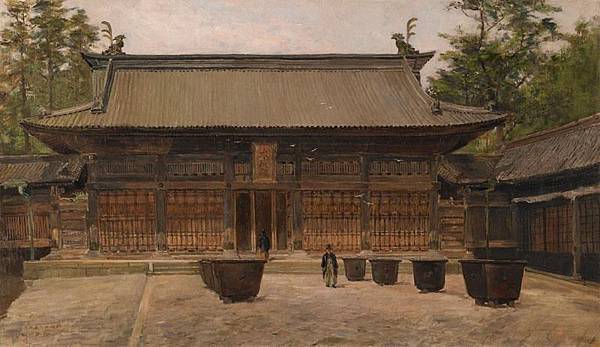

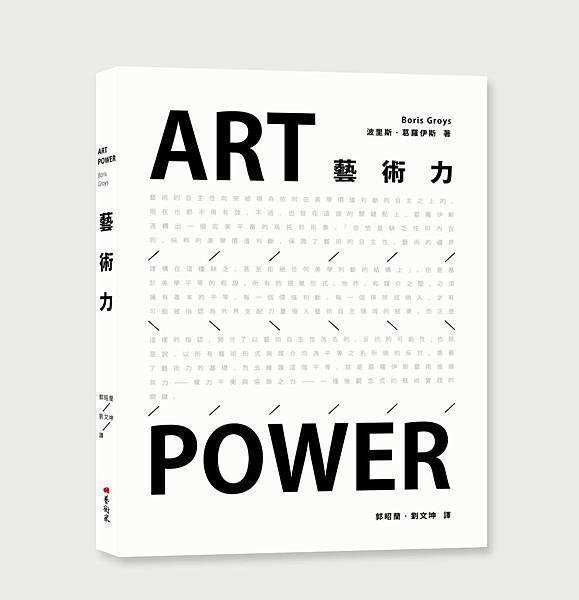
 http://wonderwash.com.sg/
http://wonderwash.com.sg/
